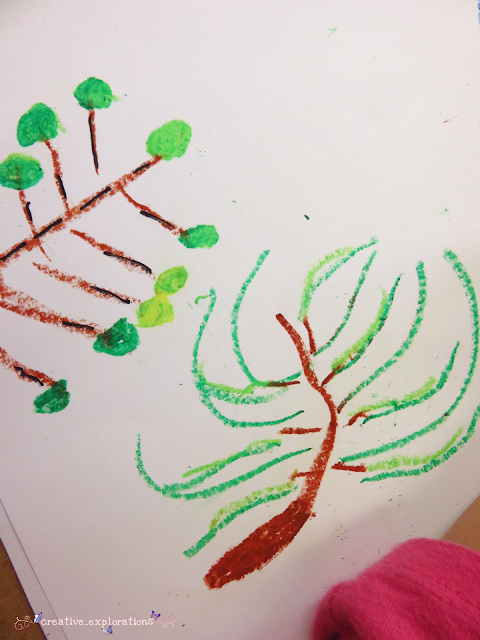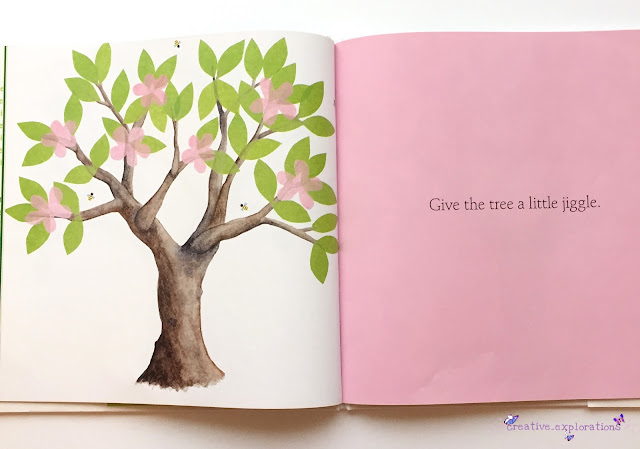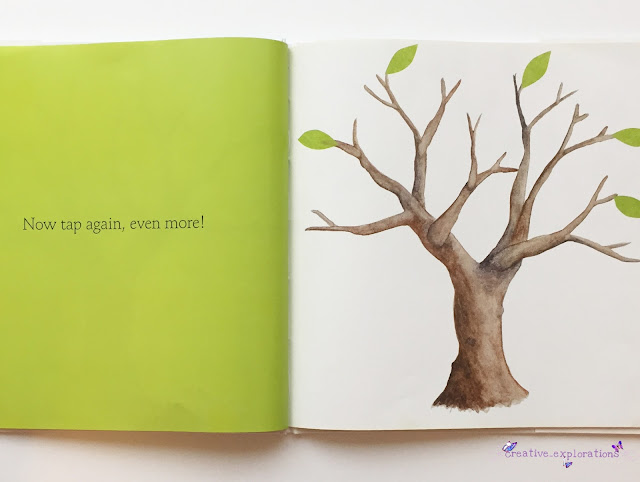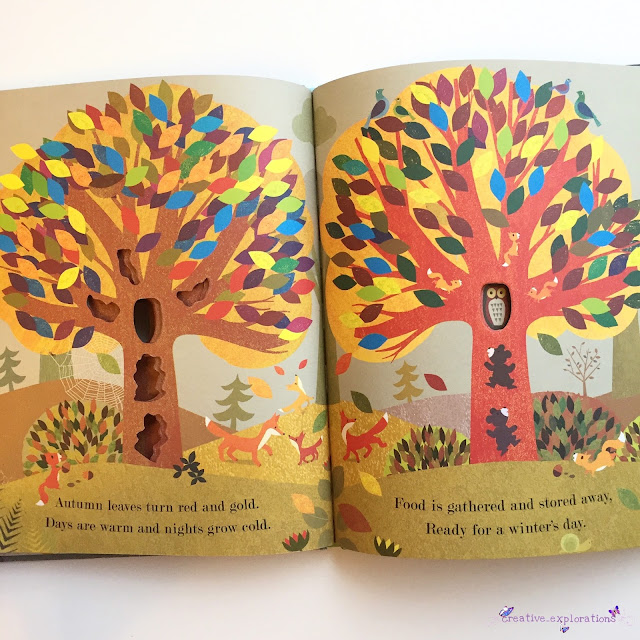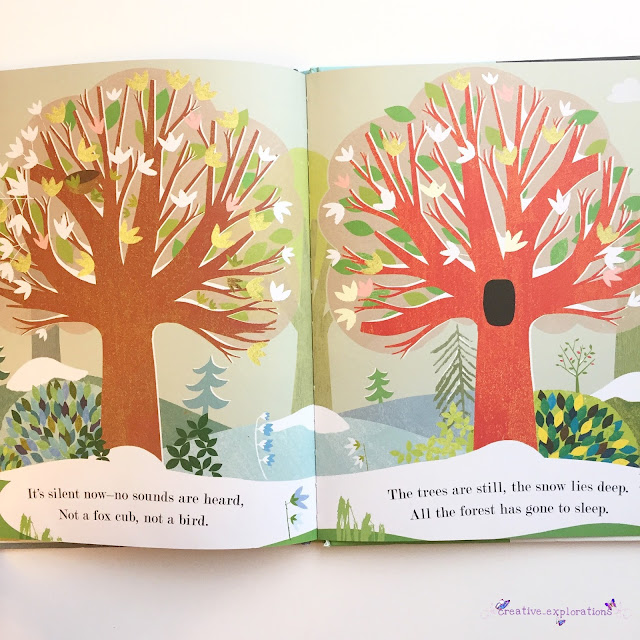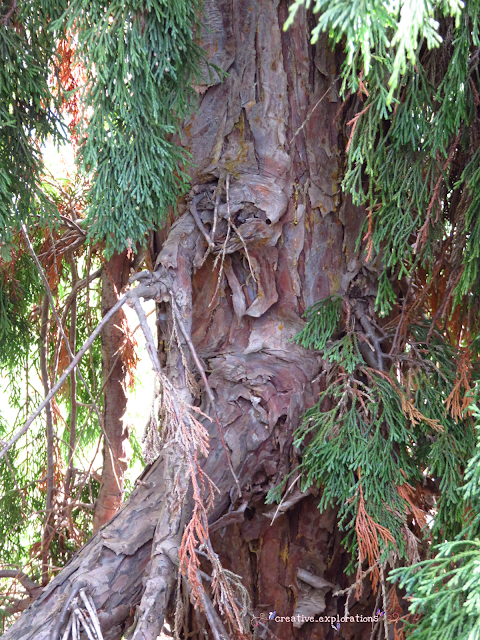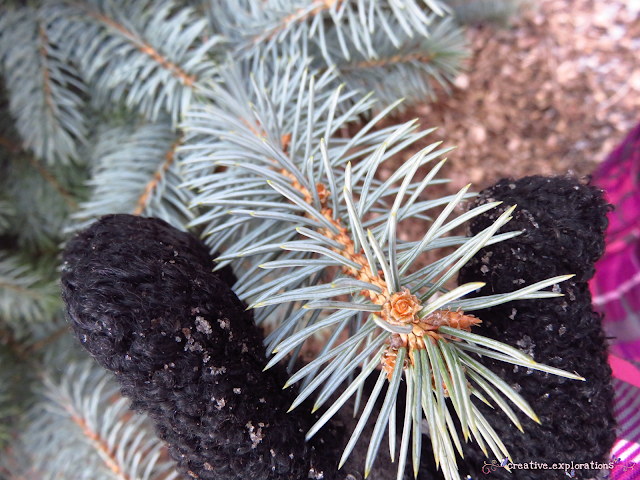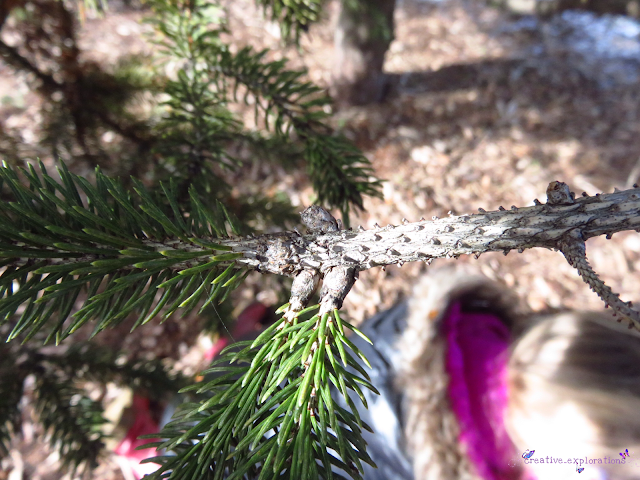"Do you see what I see? Just use your magnifying lens."
"The wind lifted me
up into the trees.
Where I danced
to the rhythm
of the evergreen.
Swaying to the tune
of the northern breeze,
Frozen in timeless melody."
- Christy Ann Martine -
As winter approached and the Autumn leaves were swept away in the wind. The children began to bring in small samples of evergreen sprigs to present and share with the children. Their shift from deciduous leaves to coniferous trees seemed natural as they explored the world around them. We allowed the children the time to make their presentations first thing in the morning. Then many of the children who presented chose to document their evergreen sprigs in the atelier or at the inquiry table. These children were then asked to present their work again to the class. As the children worked through their initial wonderings and observations it was important to give them this time to discuss their thinking with others. As well, it gave validity to their efforts and learning.
"It was on the dirt. It was this little. Did you know this is spiky? When you touch this you can't bend them." This child began his presentation by sharing his ideas about his evergreen piece. One of the children spoke when he had finished his description. He said, "It's an evergreen tree." Another child asked, "Was there a trail of them?" He replied, "No." Then they wondered, "Were you at your house?" He said, "Yes." Then someone asked, "What kind of tree did it come from?" A child answered her, "Evergreen." I asked the children to think about this, "Are all evergreen trees the same?" There was a resounding, "No." One of the children shared their thoughts. She said, "Evergreens stay in the winter with snow on it. They don't die they have the stuff on it. They stay green." A friend added his thinking to the conversation, "They don't change colours." She then said, "It smells like leaves." The children continued to share their observations and build connections to their previous experiences. One of the children thought the evergreen piece smelled too. She said, "It smells like salad at the bottom." Another child thought, "It smells like nature. Like a fresh leaf off the tree. I have green tree things with sap on them."
To extend the children's thinking they were offered a variety of evergreen branches to explore creatively. I knew the children would be so curious as they were already bringing in and presenting their own sprigs of evergreen from home. The branches were set on the table and offered with some art materials and magnifying lenses. The materials of oil pastels and black Sharpie markers were offered.
The children used all of their senses to explore the evergreen boughs. They continued their earlier experience with smelling the end of the branches. As well, they used their sense of touch and sight to notice and name the differences between the branches. One of the children shared, "I'm looking to see the difference." She was holding two different shades of green oil pastels in her hands. She was trying to decide which one matched the colour of the branches best for her observational drawing. Another child spoke next. She said, "This is the seed. This is before it grew its berries. This is when it grew a little bit. This is when it grew a lot of berries. This is when it grew very tall and got more berries than last time and more leaves." She was referring to how the needles grow from out of the branch. She also paid close attention to the Juniper berries and how they were formed off of the branch.
We continued to give the children opportunities to revisit their thinking and continue to share their ideas about the evergreen branches. One of the children began by sharing, "It's an evergreen. Can I pass it. Smell the bottom." She then went around with her evergreen sprig and the children looked, touched, and smelled the bottom of the sprig. Then she shared her second evergreen sprig. She described it to the children, "It has different spikes than the other." Next, she asked the children if they had any questions. One child asked, "Where did you find it?" She replied, "I found it on my evergreen tree. My mom pulled it off the tree." He added, "My dad is going to cut the tree down when it's Christmas." Another child wondered, "Why is it a big stem?" He had noticed that the evergreen sprig stem was thicker than the stem on the Autumn leaves we had been observing. We concluded our discussion with a reflection on the experience with the evergreen invitation from the previous day. A child said, "When the evergreen is new it's light green. When it's old it's dark green. I noticed that the blueberries were frosted. They weren't all blue they had a little bit of white on them." This was such a beautiful learning statement. This child had been working through her initial observations and wonderings about the evergreen sprig she encountered during the initial observational drawing invitation.
We shared this wonderful book with the children at our Sharing Time circle. After reading the book to them we discussed their thoughts on the book. I asked the children, "Why is this a magic tree?" The children recited chorally, "Cause it's an evergreen." A child added, "When it's snowing it never turns a different colour." Then another child said, "When the snow falls out it goes on top of trees." They continued to shared their thinking. One of the children said, "When the snow goes on the leaves turn red cause the snow is on them." We continued to allow the children to share their thinking, "If your plant starts dying in the winter it can grow back. Cause it's the same one when it's summer." What a profound statement and realization. It's always so exciting when the children make connections to nature's cycles and patterns. Our discussion continued, "It's whatever the trees are. It's like all the trees are different and it's magical." He said, "Then the leaves fall down." The children continued to build on each other's ideas and theories. "The trees change different colours winter, fall and spring."
One of the children commented after looking at one of the photos of an evergreen tree with hanging branches. He said, "The tree in the front yard looks like a ghost tree because the leaves are hanging down." Another child added, "It looks like a witch tree."
Presentation of an Evergreen branch
"It was on the dirt. It was this little. Did you know this is spiky? When you touch this you can't bend them." This child began his presentation by sharing his ideas about his evergreen piece. One of the children spoke when he had finished his description. He said, "It's an evergreen tree." Another child asked, "Was there a trail of them?" He replied, "No." Then they wondered, "Were you at your house?" He said, "Yes." Then someone asked, "What kind of tree did it come from?" A child answered her, "Evergreen." I asked the children to think about this, "Are all evergreen trees the same?" There was a resounding, "No." One of the children shared their thoughts. She said, "Evergreens stay in the winter with snow on it. They don't die they have the stuff on it. They stay green." A friend added his thinking to the conversation, "They don't change colours." She then said, "It smells like leaves." The children continued to share their observations and build connections to their previous experiences. One of the children thought the evergreen piece smelled too. She said, "It smells like salad at the bottom." Another child thought, "It smells like nature. Like a fresh leaf off the tree. I have green tree things with sap on them."
Evergreen Invitation
"It's an evergreen!"
Atelier Evergreens
The children recreated the evergreen invitation in the atelier the following morning after exploring the first observational drawing invitation. They placed the evergreen sprigs on the table and added the art materials they needed. The children continued exploring their ideas from the previous day. One of the children looked at the evergreen section she had been reflecting on previously. She looked at me and said, "See two different shades of green. Old and new." Today the children's interest was focused on showing this variance in colour from light green to dark green in their drawings. The children demonstrated how to go from light green to dark green using the pastels sharing their knowledge of the art medium. She discovered that if you press lightly the colour is lighter. Then if you press darker the colour is darker. The other children gathered at the table all experimented with this discovery.
Tap the Magic Tree
"All the trees are different
and it's magical." E.W.
and it's magical." E.W.
We shared this wonderful book with the children at our Sharing Time circle. After reading the book to them we discussed their thoughts on the book. I asked the children, "Why is this a magic tree?" The children recited chorally, "Cause it's an evergreen." A child added, "When it's snowing it never turns a different colour." Then another child said, "When the snow falls out it goes on top of trees." They continued to shared their thinking. One of the children said, "When the snow goes on the leaves turn red cause the snow is on them." We continued to allow the children to share their thinking, "If your plant starts dying in the winter it can grow back. Cause it's the same one when it's summer." What a profound statement and realization. It's always so exciting when the children make connections to nature's cycles and patterns. Our discussion continued, "It's whatever the trees are. It's like all the trees are different and it's magical." He said, "Then the leaves fall down." The children continued to build on each other's ideas and theories. "The trees change different colours winter, fall and spring."
The next discovery was when we were exploring the evergreen trees in the school's front yard. The children noticed that there were brown berries hanging on one of the trees. This prompted a little mini inquiry within our evergreen inquiry. They collected a few of the berries that had dropped to the ground and brought them back to the classroom. One of the children was especially curious about the berries. She drew the berry and wrote her thinking down. She shared that she thought the berry was a kiwi. She hypothesized that this was a kiwi because of the colour of the outside skin on the berry. Although she thought it was very small for a kiwi. She shared that it had not finished growing yet. We will also observe this tree in the spring to see of we can name it's type through research.
Tree
We shared the book, "Tree" with the children during Shared Learning time. The children listened to the story and then we discussed how the yearly seasons are in a pattern. The children also noticed and named how the tree changed each season. Our discussion moved towards discussing how animals use trees and how some animals hibernate in the winter. I asked the children the following question, "Do trees hibernate?" The children thought yes because the leaves die in the winter but come back in the spring.
Identifying Evergreens
The children used the book, "Trees of North America" to label the samples of evergreen sprigs that they had collected. They used the illustrations in the book and compared them to the evergreen samples. We discussed and looked closely at each sample describing what we saw before we came to a group decision. The children then labeled each evergreen card with the evergreen tree name.
Reflections Of Evergreens
We shared with the children the photos and videos that were collected from their exploration of the evergreen trees in the front yard of the school. The children shared, "We looked at the front of the school where there was an evergreen tree with pine cones." "They look like roses." "Some are dark and some are light." She paused then continued to speak. She said, "We brought an evergreen outside and we thought it matched or came from the tree." She was referring to our efforts to match the children's collected evergreen sprigs from home to the selection of evergreen trees in the front of the school. We hoped that the children would discover which tree each sprig may have come from.
We continued to view the photos and the children discussed how the stems of each evergreen tree looked different. One of the children noticed, "The stem is pinkish-red. The stems are different." The children also shared that the newer growth on each of the trees looked different in colour than the older growth close to the trunk of the tree.
One of the children commented after looking at one of the photos of an evergreen tree with hanging branches. He said, "The tree in the front yard looks like a ghost tree because the leaves are hanging down." Another child added, "It looks like a witch tree."
Next, we shared the photo of the evergreen from the front yard with the "blueberries" on it. The children had become quite fascinated with what they thought were "blueberries" from our initial evergreen invitation. Seeing the same "blueberries" on the evergreen tree was very exciting for them. As they noticed how they were growing on the tree their ideas swirled in the wind on the cold December day. Revisiting the photo brought about this question as part of our discussion. They wondered, "Why is the blueberry brown at the bottom on the evergreen?" A child shared, "The branches look like they have little seeds attached. So before it was pink and then it turned green."
Next, we shared the photos of the children matching their evergreen sprigs to the trees planted in the front yard. The children shared how we had matched most of the sprigs to the various trees outside. How fortunate to have such a variety of evergreen trees planted in the front of the schoolyard. We will continue to investigate the children's interests and hope to discover the names of each evergreen tree through further research.
One of the children made another observation after viewing the photos. She shared, "If evergreen leaves fall off the tree they don't live anymore and turn brown." The children had discovered this when exploring under the evergreen trees.
Our discussion concluded with this thought,
"We noticed on the branches there were buds."
This would be the spark for the current inquiry that we are engaged in as I write this post.
This would be the spark for the current inquiry that we are engaged in as I write this post.
"Look deep into nature,
and then you will understand everything better."
Albert Einstein
Take time to be still,
to listen quietly,
to look closely,
Breath in the beauty,
that surrounds you.
Until next time,
Michelle














